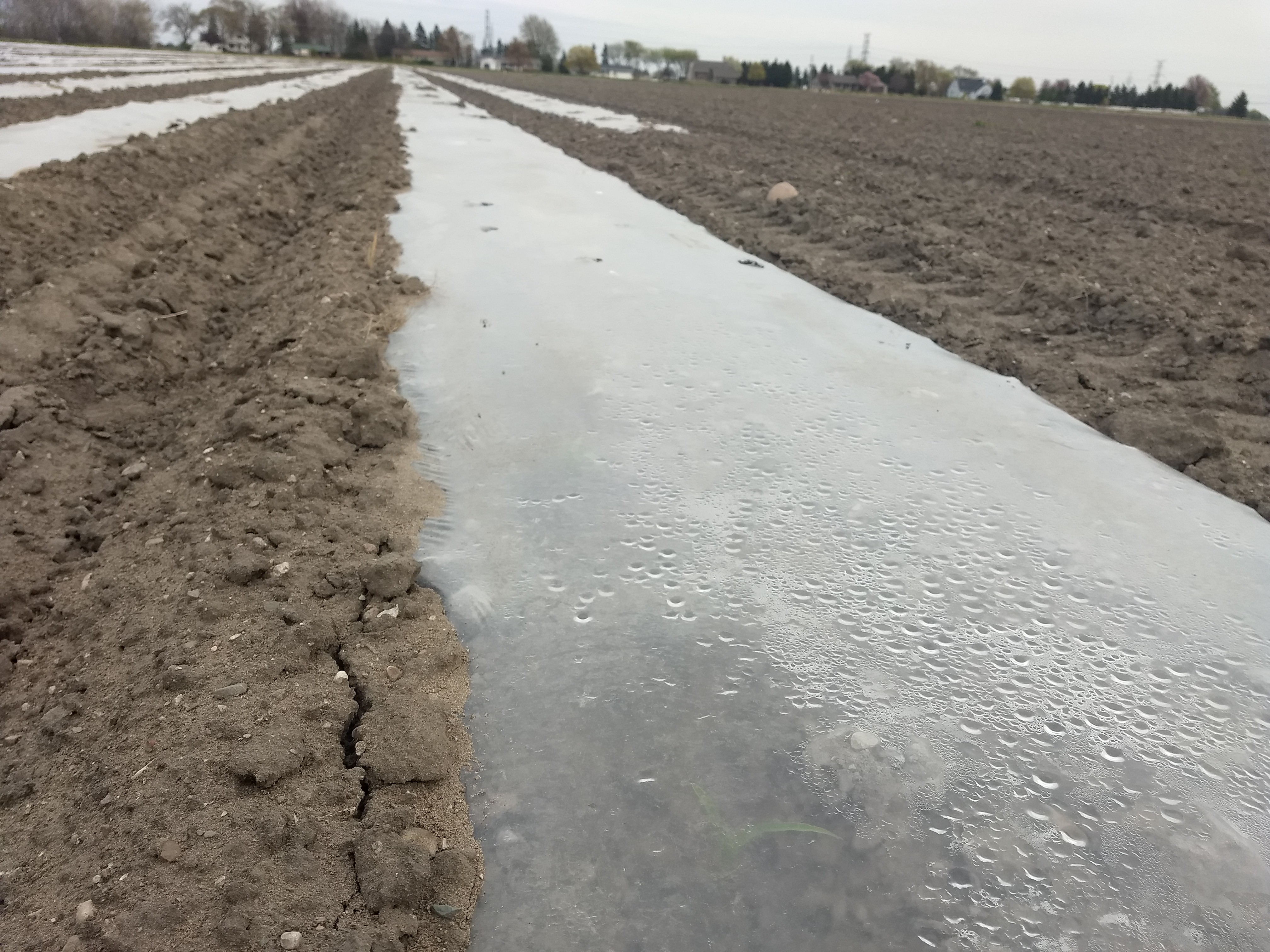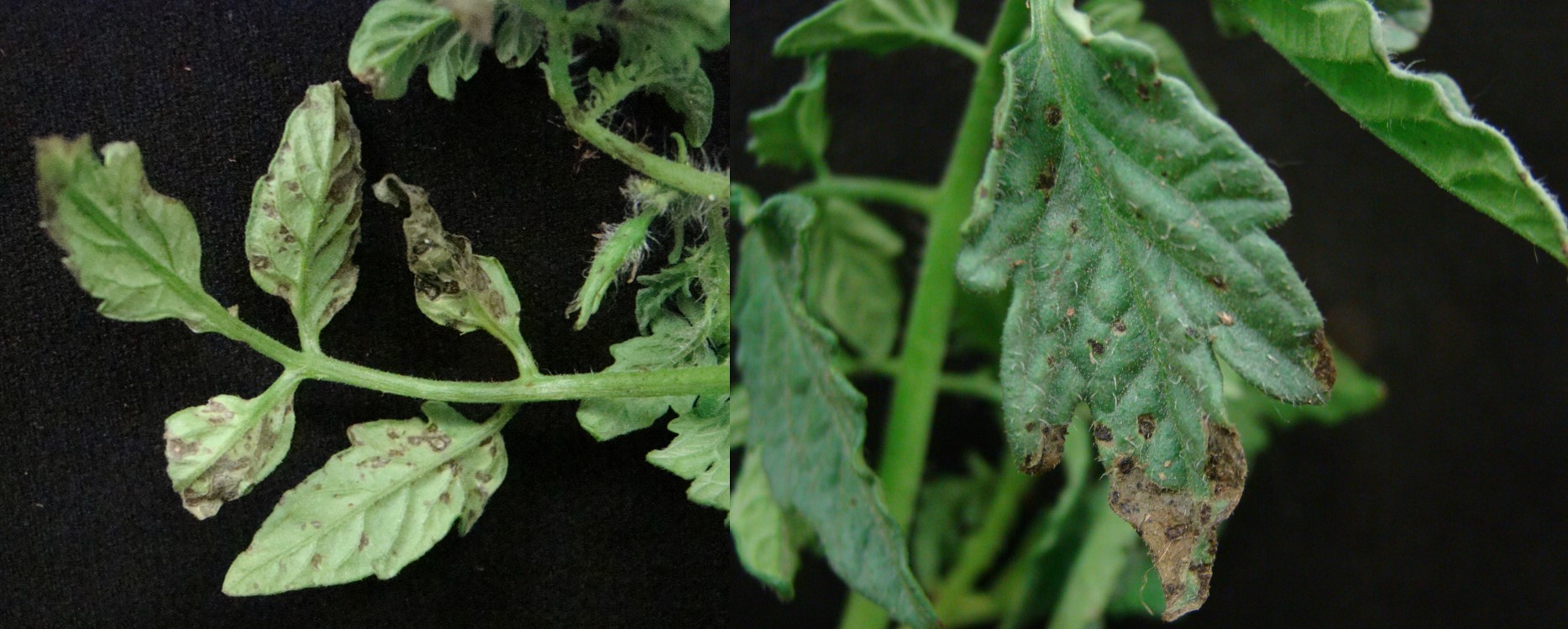Michigan vegetable crop report – April 28, 2021
Dry fields have allowed for ramped up field work. Field sowing and maintaining transplant health are priorities right now.

Weather
Weather to-date and forecast
Growing degree day totals are several to two weeks ahead of normal for most of the state.
We are starting the season with a 2-4-inch rainfall deficit, or about one month’s worth of rainfall. Evaporative demand, which is driven by warm temperatures, sunny days and low relative humidities, has also been higher than normal for spring. As a result, about 57% of the state has moderate drought conditions with dry soils.
Precipitation totals of 0.25 to over 1 inch are forecast for today, April 28, through May 5, with higher totals to the south. Showers and thunderstorms are likely to occur on Thursday, especially in southern Michigan. Fair, dry weather is forecast for Friday and Saturday. The next best chance of significant, widespread precipitation will occur late Sunday into Monday.
High temperatures are forecast from the 40s north to the upper 70s south Wednesday, falling back to the 50s by Friday. Lows are forecast in the 30s north to the low 50s south Thursday, cooling to the 30s by Saturday. By Sunday and Monday, highs should be back into the 60s and 70s.
Scattered frost is possible Saturday morning. However, lows are not expected to go below the low to mid-30s.
The medium- and long-range guidance suggests warmer- and wetter-than-normal weather for the first week of May and beyond.
MSU weather stations and pest predictions near you
Michigan State University's network of over 100 weather stations can be accessed at MSU Enviroweather
There are several pest prediction models based on temperature accumulations, including seedcorn maggot, cabbage maggot, European corn borer and squash vine borer. Click on any of those pests to be taken to the model. Once there, change the region and station to one nearest you.
General crop management notes
Field work for main season vegetables was fully underway this week across the region. Several crops have been seeded. Rye strips windbreaks were up to knee high, but plastic had not yet been laid for tomatoes, peppers and melons.
Irrigation has already been pumping on early-season lettuce, and other crops may need some attention during this dry spring.
Don’t permanently remove frost cloth from warm season vegetables yet. There is another threat of frost coming Friday night / Saturday morning.
For greenhouse pest management of pests on flowers, see the greenhouse disease and insect management recommendations for 2021. Let’s be honest, managing the health of flowers is the first step in managing the health of the vegetable transplants that are often grown around or underneath them. Be sure to check labels for pesticide use on vegetable transplants.
For this season, the Soil and Plant Nutrient Lab and the Plant & Pest Diagnostics Lab are still accepting mailed in samples. You may want to call ahead.
Soil and Plant Nutrient Lab
Email: spnlab@msu.edu
Phone: 517-355-0218
Plant & Pest Diagnostics Lab
Email: pestid@msu.edu
Phone: 517-355-4536
Crop updates
Asparagus
Asparagus harvest had not begun as of Monday, April 26, in Oceana County. West central growers were finishing their final mowing of rye after herbicide application. Spears started to pop this week but the cool weather will likely delay widespread harvest until next week.
What can you do if your rye cover crop escapes control with glyphosate? One option is apply a grass killer to clean up escapes (all have a one-day preharvest interval, or PHI). These include:
- Fusilade (active ingredient fluazifop-P, use with non-ionic surfactant or crop oil)
- Poast (active ingredient sethoxydim, use with crop oil)
- Select Max (active ingredient clethodim, use with a non-ionic surfactant)
Weed control is on growers’ minds as herbicide application wraps up. A complete list of asparagus herbicides can be found in the E433 - 2021 Weed Control Guide for Vegetable Crops, and is also available via the mobile-friendly Midwest Vegetable Guide. Past articles on weed control include, “Plan now for season-long weed control in asparagus” and “Complete weed control is critical for maximum asparagus yields.”
White cutworm can feed on asparagus tips in early spring, though this sporadic pest is usually well-controlled by chlorpyrifos applications. Permethrin (one-day PHI) can provide control during the harvest season. Use the cool weather for a quick refresher on common asparagus beetle biology.
Carrot, parsnips and celery root
Carrot planting in Lapeer County started April 6 and the nurse crops are still up.
Celery
The new supplemental label of Prowl H2O has been issued for celery grown on muck. Up to two applications are allowed starting one or more days after transplanting (60-day PHI). Prowl H2O is an effective preemergence herbicide and provides control of most annual grasses, pigweed species, common purslane and common lambsquarters.
Cole crops—heading, leafy and rooting
The GoalTender Section 24c label was renewed for cole crops, allowing for postemergence application.
Cabbage maggot fly activity likely started over the past two weeks based on degree-days at some Enviroweather stations. There are some alternatives to chlorpyrifos available for control. Tray-drenches of Verimark have shown efficacy for cabbage maggot control in transplanted brassicas and also provide early-season caterpillar control.
In direct-sown root crops, weekly applications of Mustang Maxx-starting at fly emergence-have reduced damage in trials. These could be a useful compliment to at-plant chlorpyrifos applications, when and where chlorpyrifos isn’t pulling its weight. Row covers-placed over hoops or a lightweight floating style-are highly effective.
Herbs
Dill in Bay County was at the rabbit ear stage. Dill, cilantro and parsley were sown in Lapeer County, and the parsley is up.
Lettuce and other greens
Lettuce transplanting in Lapeer County started April 23, and direct sown-lettuce in Bay County was at the first leaf stage as of April 26
Onions and garlic
Onion planting in Lapeer County started March 28 and the nurse crops are still up. Sweet onion transplanting in Bay County started April 23 on baresoil, and plasticulture sweet onions in Tuscola County were in by April 10. Onions were up in Ottawa County as of last week. Some farms had been irrigating muck soils to keep them from blowing.
The GoalTender Section 24c label has been renewed for onions at the first true leaf growth stage.
Garlic was damaged by last week’s frost and just started showing symptoms yesterday in the 80s degree Fahrenheit.
Potatoes
The first plantings of potatoes in Bay County are in.
Other root crops (beets and sweet potatoes)
Beets are on their second or third planting in Bay County.
Strawberries
Strawberry buds that we were able to inspect in Bay County made it through the frost. The trusses were up about an inch above the crown as of April 26. In southwest Michigan, there was some sporadic damage to buds. In southwest Michigan, flower trusses are emerging from the crown in early varieties. At this stage, the buds are sensitive to temperatures below 22 F. Several areas in southwest Michigan saw temperatures in the low to mid-20s last week on Wednesday and Thursday morning. A small number of growers are reporting damage to the emerging flowers.
Sweet corn
The earliest planting of sweet corn went in the ground in March in Genesee County, and was up by April 6. Early seedings under plastic in Bay County were at 3 inches on April 26. The main season plantings were fully underway starting around April 23 across the region.
It is time to select preemergence herbicides to be applied in sweetcorn. The best way to effectively control weeds is by applying residual, preemergence herbicides with multiple effective sites of action. Several preemergence herbicides (Aatrex, Dual Magnum, Surpass, Outlook, Prowl H2O, Zidua, Sharpen and Callisto) are labeled in sweet corn and could be considered. Visit E433 - 2021 Weed Control Guide for Vegetable Crops for details.

Tomatoes, peppers and eggplants
First tomatoes were being transplanted under frost cloth in Bay County April 27.
Greenhouse tomato and pepper transplants may have a dense canopy at this time. Bacterial spot disease can become established on both tomatoes and peppers but occurs most commonly on tomato. Bacterial spot symptoms can vary widely in their appearance and it is recommended that any spotting be considered suspect and a sample be sent into a diagnostic laboratory. Bacterial spot on tomato is best handled preventively. Once symptoms develop, the diseased plants cannot be cured and all efforts become focused on limiting spread to healthy plants.

MSU recommendations have included the use of copper beginning at the first true leaf with repeated applications occurring every three to seven days depending on the situation. Nordox 75 WG and Kocide O can be used in alternation when an interval shorter than seven days is needed. Please note that sprays of Kocide O require a long re-entry period for workers. It is also recommended that Agrimycin be tank-mixed with one of the copper sprays and be applied weekly. Cultural strategies that limit bacterial disease and also fungal disease on tomato transplants include limiting watering and running the plants on the drier side.
Good ventilation to avoid pockets of high relative humidity is very important. Water the plants at a time of day when the foliage can dry rapidly. Should bacterial spot symptoms develop among the tomato transplants, diseased plants should be disposed of including healthy-appearing plants that are immediately adjacent to those that are showing symptoms.
Tomato spotted wilt virus and impatiens necrotic spot virus may impact vegetable transplants when greenhouse flower crops are grown in the same greenhouse or in a nearby greenhouse. These viruses are transmitted by western flower thrips. Thrips are not easy to detect and manage and should be monitored using sticky cards placed within the plant canopy. Flowers should be scouted for ringspot symptoms or other spotting that are common symptoms of impatiens necrotic spot virus and tomato spotted wilt virus. These viruses can infect a wide range of flower and vegetable transplants. Some especially susceptible flowers include begonia, impatiens, and dahlia.
Tomato and pepper transplants that become infected with the virus in the greenhouse will not perform well in the field. In the field, virus infected tomato transplants may develop a general necrosis or bronzing with mottled fruit once in the field. Pepper transplants infected with virus while in the greenhouse typically do not grow in the field and appear stunted and do not produce fruit. Samples of peppers with tomato spotted wilt virus have been submitted to the diagnostics lab already.
Events
- May 5, 12:30-1:30 p.m. Vegetable Beet! Urban Farm Water Access (1 RUP for live listeners, also available for later listens via podcast)
- May 5, 12 p.m. Chestnut Chat webinar series
- May 6, 7-7:30 a.m. Field Crops Virtual Breakfast: Rhizoctonia Management with Daniel Bublitz (1 RUP for live listeners)
Food safety
Need your water tested for the Food Safety Modernization Act (FSMA)? Check out the Michigan Ag Water Lab Map.
On-Farm Readiness Reviews are designed to help fresh produce growers feel prepared and ready for a full implementation of the FSMA. They allow growers to walk through their operation with a small team of food-safety experts and discuss how to meet the new FSMA Produce Safety Rule requirements. Sign up for an on-farm readiness review.
Farm Supervisor Produce Safety Courses are being hosted through the MSU Online Learning Portal - D2L. They are self-paced and free. It will be available for farm supervisors starting July 19. Register here.



 Print
Print Email
Email

